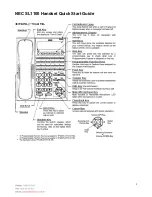
36
P1512137 R3
3. Longer conveyors have a large turning radius. Allow ample room for turning as the discharge end may swing
dramatically. Allow all oncoming traffic to pass before turning right or left.
A collision with an oncoming vehicle could occur if the conveyor discharge swings into the
opposing lane.
Table 3.
Speed versus Weight Ratio
Road Speed
Weight or fully equipped or loaded implement(s)
relative to weight of towing machine
Up to 32 km/h (20 mph)
1 to 1, or less
Up to 16 km/h (10 mph)
2 to 1, or less
Do not tow if
More than 2 to 1
4.3. Connect the Conveyor to the Towing Vehicle
This section provides and overview of how to connect the conveyor to the towing vehicle. For specific
information on the components, refer to the applicable section.
Follow all safety precautions when transporting the conveyor and use a proper towing vehicle.
1. Fully lower the conveyor, there should be slight tension on the lift cable.
2. Connect the conveyor to the two vehicle with a hitch pin. Use a hitch pin that will not allow the conveyor to
separate from the towing vehicle.
3. Connect the safety chain securely, forming a cradle to prevent the conveyor from digging into the road
surface (should a breakaway occur). Do not use the safety chain if one or more links or end fittings are
stretched, broken, damaged, or deformed.
Important
The safety chain should have a load rating at least as high as the conveyor weight.
4. Use caution when transporting the conveyor over rolling terrain. In severe dips, the intake end may contact
the ground.
Refer to
Section 9. – Specifications on page 71
for conveyor weight and hitch pin information.
S-DRIVE STANDARD CONVEYOR – PORTABLE GRAIN BELT CONVEYOR
















































